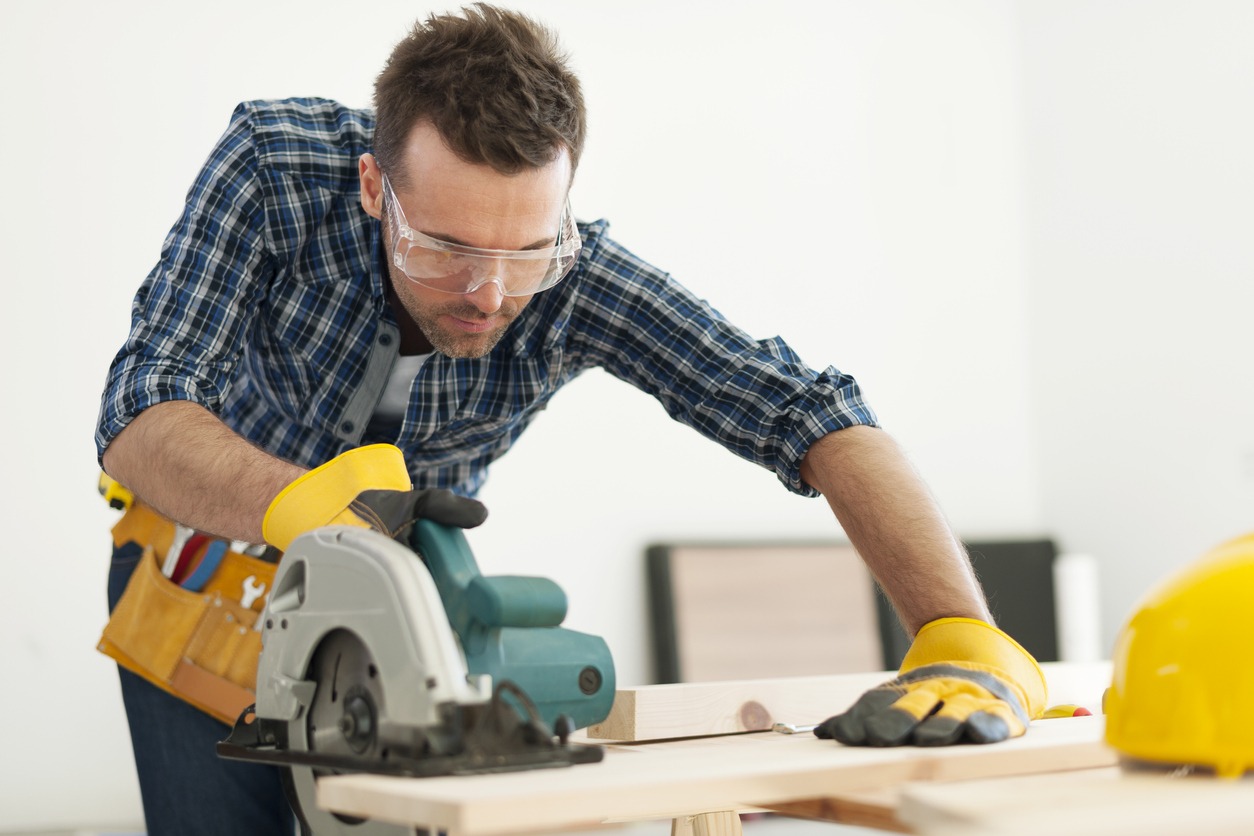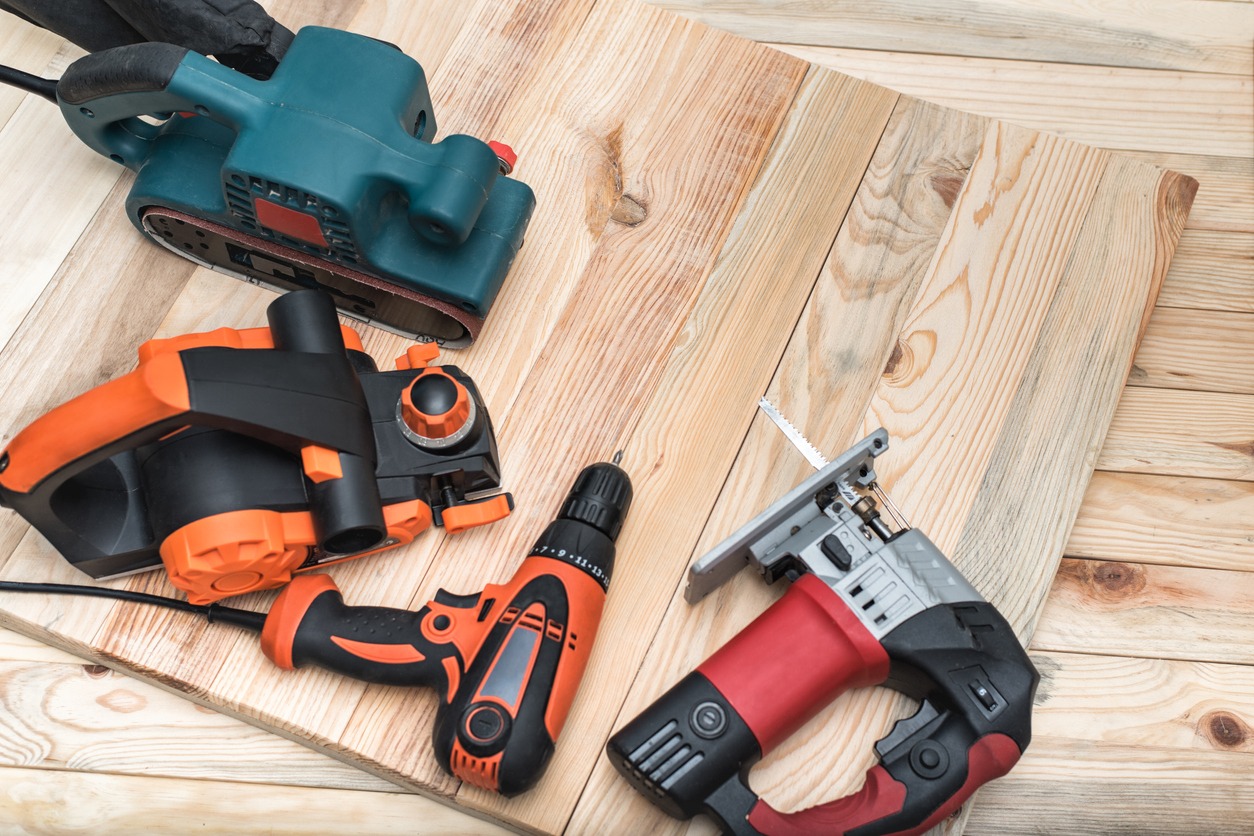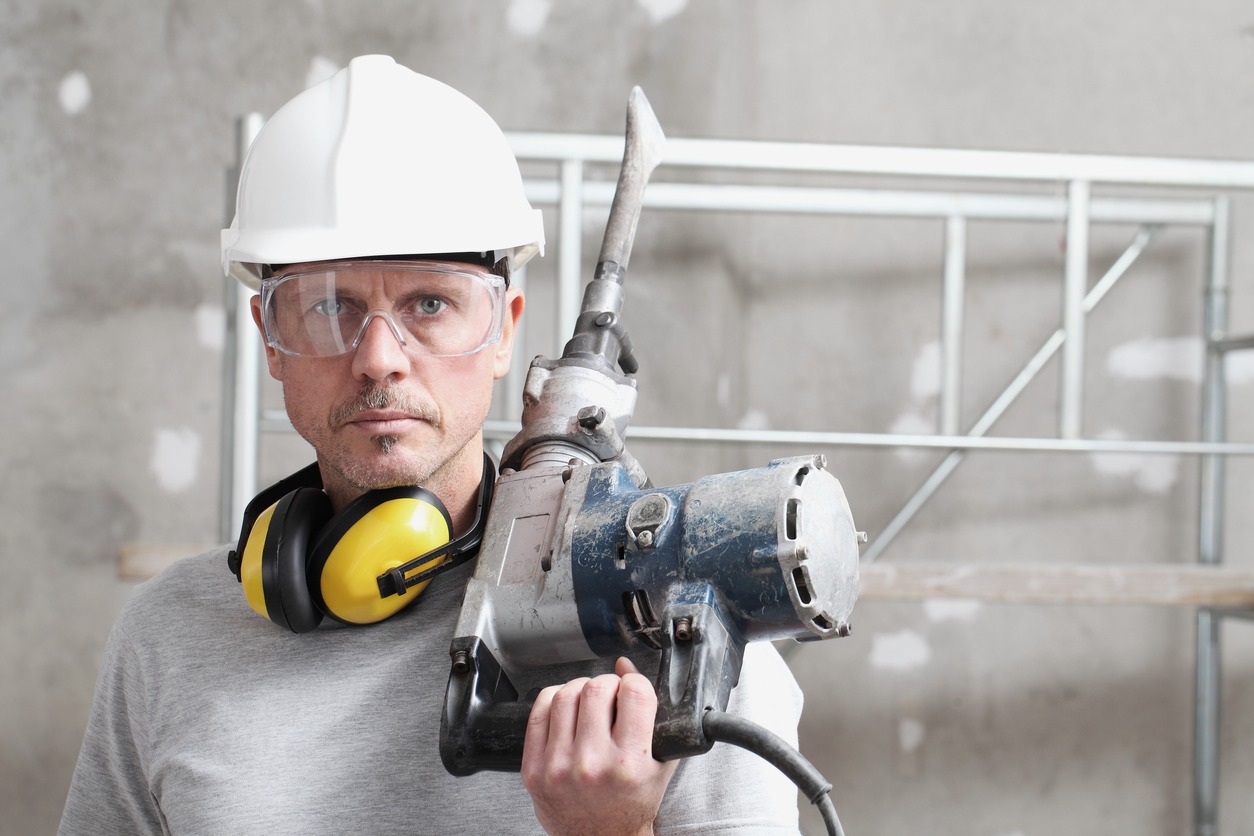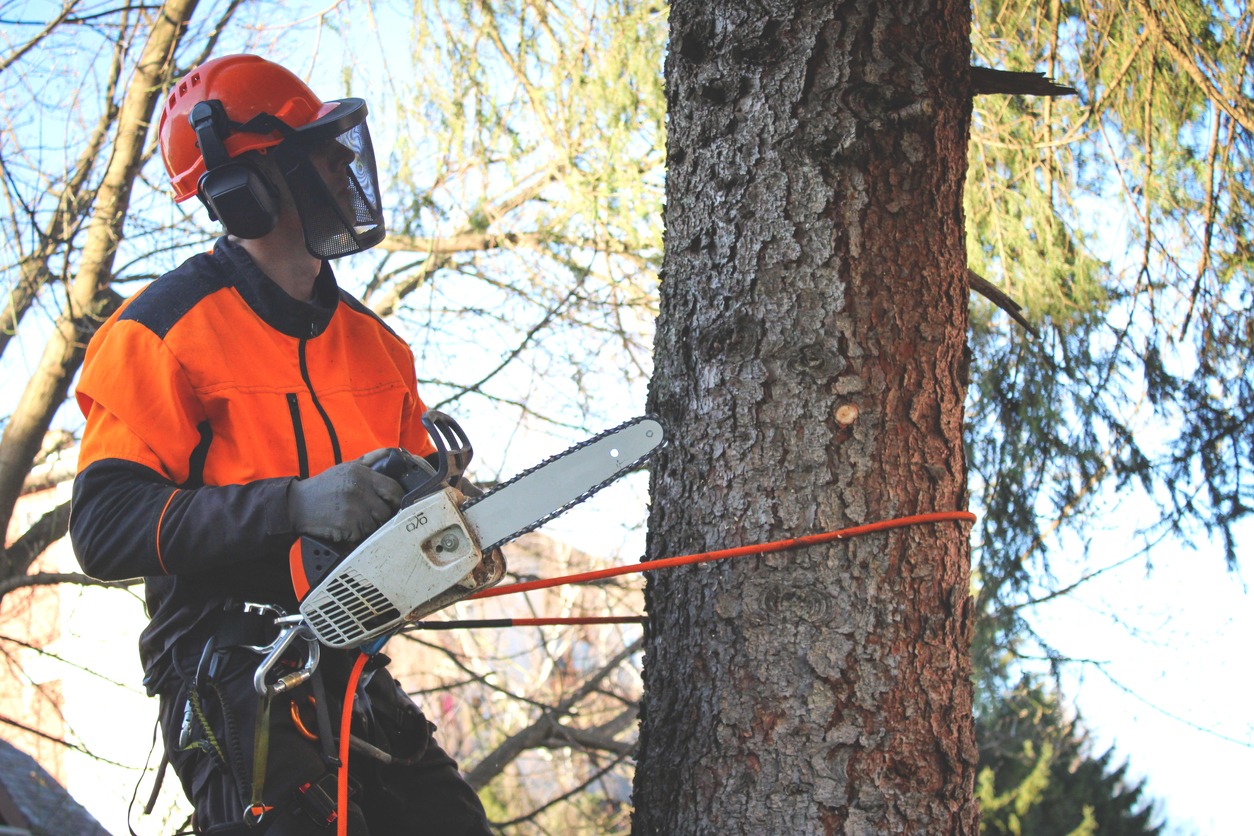Power tools make your work faster, easier, and more efficient. A lot of power tools have ergonomic designs that enable you to work as safely and comfortably as possible.
However, the integrated safety features of several power tools do not necessarily mean that you should be complacent in using them haphazardly or without wearing any safety gear. A lot of power tools indeed have safety elements and even UL safety certifications. Yet, you might be required to wear protective equipment to keep accidents at bay.
The first step is to always follow all manufacturer instructions and guidelines for safety.
Here’s a fact: around 400,000 emergency room visits each year are caused by the improper and unsafe use of handheld power tools. Some of these accidents are also caused by using defective products. So if you don’t want to become a part of that statistic, take heed of the following practices when using power tools to ensure a safe and hassle-free working environment.
General Safety Tips for Power Tools
Before using any power tools, you should know the basic safety tips for handling these devices. This is not something to take lightly, as these are powerful tools (as suggested by the name). Follow these tips to prevent a major loss, injury, or damage:
- Buy quality tools and avoid defective products. If the products are incredibly cheap and are on “sale,” it’s best to avoid them! When buying tools from an electronics or hardware shop, it is best to have them tested first to make sure that they are working well as they should.
- Keep the OR, invoice, or any proof of purchase so that you could use them in case you have to return defective products to the seller for a refund or replacement. Also, do not forget the warranty – that’s the most important! However, make sure that the defects are caused by factory error. Otherwise, damage to the product by your own undoing can nullify its warranty.
- Inspect and test the tools regularly to make sure that they are in good shape for use.
- Regularly clean and maintain your power tools to keep them in top working condition. Always follow the manufacturer’s instructions.
- Avoid wearing loose clothing or accessories that can get caught in the power tool’s moving parts, such as ties or dangling jewelry.
- Wear appropriate safety gear, such as leather aprons, leather gloves and safety goggles.
- Wear an appropriate face mask to prevent inhaling sawdust, particles, smoke, fumes and chemicals.
- Wear closed and non-slippery footwear to protect your feet from sharp objects and to avoid slipping accidents, which may cause serious injuries.
- Wear an appropriate hearing protector, especially when working in an environment where noise levels reach 85 decibels and above.
- When you have to carry tools as you go up the ladder, put them in a bucket or bag to hoist them up.
- Be aware of the people around you, and make sure to keep them away from the tools you are using.
- Secure your work with a clamp or vise to keep it from falling or slipping.
- When working at heights, never leave your tools scattered on areas where they could present hazards to other workers, especially children and pets
- Make sure that the tools are stored in a safe place, away from pets and children. If you don’t already have it, consider installing some proper storage for your power tools
- Do not carry the tool by the cord or hose.
- Do not yank the cord or hose to disconnect it from the power outlet.
- Disconnect tools after you use them, when you are about to clean or service them, or when you are preparing to switch between accessories. If the tool is battery-powered, take out its battery between uses.
- Keep the cords and hoses away from oil, heat, and objects with sharp edges.
- Make sure to keep your footing firmly planted on the surface, and maintain the right balance when operating power tools.
- If you’re using a power tool on a surface, the latter should be completely stable; the slightest movement could hurt you or someone near you–it might be wise to invest in a portable workbench or a specialized stand if you use such tools frequently
- Keep your workspace clear by removing all clutter from the floor and keeping it clean at all times to prevent slipping or tripping.
- Learn the proper way to use various power tools and the pieces you’re working on. The most common instructions will tell you to hold your thumb in and use a closed grip in order to keep your fingers as far away from any blades as possible without compromising your secure grip on the tool
- Sharp is safe, whether you’re using power tools or hand tools. With cutting edges or blades that are dull, you will have to put in more force and risk breakage or jamming. It will also risk the tool kicking back at you, so make sure to keep all accessories such as blades, bits, and other edges as sharp as possible.
- Light your workplace properly, as dim lighting can mean a deadly result while using power tools. Use additional lights if you have to, or invest in larger window for natural lighting
- If your power tools have a three-pronged, grounding plug or a three-conductor cord, make sure to use an electrical outlet that has three holes too. When using any adaptors, ground the wire as well
- Keep your feet and hands dry at all times, especially if your work location is damp. It’s safer to have a rubber mat under your feet and a wooden stool to sit on
- Keep calm and stay confident when handling power tools. Take breaks if you’re getting nervous, if your hands are shaking, or if you’re under the influence of heavy medication. The same applies when you’re feeling overly anxious, distracted, in pain, or exhausted.
If you’re not sure how to go about getting power tools, this power tool combo kit buying guide might come in handy.
Keeping Eyes Safe When Using Power Tools
When working with power tools, protecting your eyes should not be an option – even at your workshop or garage.
Eye injuries are still one of the major workplace injuries. According to the National Institute for Occupational Safety and Health (NIOSH), about 2,000 American workers and laborers suffer job-related eye injuries that require medical attention.
The most common causes of eye injuries at workplaces include:
- Allergies – an allergic reaction to substance and chemical exposure is usually called allergic conjunctivitis
- Flying debris
- Welding torches
- Punctures from pointed objects
- Not wearing eye protection properly
- Wearing the wrong kind of eye protection for the job
- Chemical burns
- Uncorrected vision
One of the safety necessities in your workshop is to protect your eyes from the likelihood of such common injuries.
How to prevent eye injuries in your workplace
If you feel that one or more of the factors above applies to your situation, here are some steps that can help prevent eye damage during work:
- Set up an eyewash station that is right next to your first aid kit. Hopefully, you won’t have to use the eyewash station. But it’s better to have one installed in your workplace to treat your eyes immediately in case they get irritated by sawdust, shavings, chemical splashes, or welding/grinding sparks.
- Replace high-risk equipment and chemicals with safer alternatives whenever possible.
- Install proper lighting to avoid straining your eyes while working.
- Wear protective eyewear such as goggles to protect your eyes from impact, chemical splashes, as well as burns from welding and grinding torches.
- Wear full-face helmets and shields.
- Have your eyes checked by your optometrist or ophthalmologist if your vision is deteriorating.
- They can diagnose and treat whatever condition has caused your blurring vision and may prescribe special safety glasses.
- Do not remove safety guards from the tools. Whether they’re on miter saws, circular saws, or table saws, the guards are in place to prevent users from getting hurt by a blade or something else. Also, make sure to keep any two-stage safety triggers on a functional level; this will prevent you or anyone else from starting the tool by accident.
Can contact lenses protect your eyes from injuries at work?
So far, there is no evidence that contact lenses provide sufficient protection to your eyes from the injuries earlier mentioned. However, there is no proof that contact lenses can further damage your eyes, either.
In any case, wearing contact lenses may help increase your safety in the workplace in several ways:
- They can improve your vision;
- They provide a wider field of vision (compared to wearing graded eyeglasses);
- They have less visual distortion;
- They are less affected by wet weather and high humidity;
- They provide a better fit for your eyes;
- They are more convenient to wear compared to glasses
How to Protect Your Ears from All the Power Tool Noise
Do you get uncomfortable hearing the leaf blower? Do your ears irritate when you use the power washer? Do you want to make sure your ears are protected and have some peace and quiet? If ‘yes’ is your answer to any of the above questions, you’ve come to the right place.
Power tools can expose your ears to sound that could go as loud as 100 dB. And this noise of 100 dB can damage your eardrums. Sound-induced hearing problems could occur if your ears get exposed to 85 dB+ sounds (even a bit of exposure can be damaging). Outside and in-home power tools are known to make sounds ranging from somewhat annoying to extremely damaging.
Whether it’s a chainsaw, an electric edger, a nail gun, or a miter saw, it’d be smart to wrap your ears with hearing protection when using power tools.
Not sure just what counts as a power tool? Here are some of the most common examples:
- Circular saws
- Table saws
- Angle grinders
- Power drill drivers
- Miter saws
- Impact drivers and wrenches
- Reciprocating saws
- Sanders
- Air compressors and most tools powered by them
Generally speaking, all power tools can be quite safe as long as they’re manufactured and used properly. Several models even have added safety features and guards for making sure the user stays safe.
However, we still need to use various kinds of protective gear while using any power tools. Let’s have a detailed look at some of the major aspects of protective gear and safety protocol while using such tools.
What to Look for In Hearing Protection?
If you’ve never used hearing protection before, here are a few important considerations:
Type
There are three types of ear protection: foam earplugs, earmuffs, and molded earplugs.
The first option is cheap, disposable and convenient. Foam earplugs may serve to block all sorts of noise near the user. However, they can be a bit uncomfortable and can dislodge from the ear if the user moves his/her jaw to a great extent.
Earmuffs, on the other hand, are more comfortable to wear, though the dB levels they block are less than what earplugs are capable of.
Molded earplugs combine the best of both worlds, and are often linked to a cord or line for fitting around the user’s neck. They keep high dB out while allowing you to hear low dB conversations.
Absorption of Decibel Level
The faintest noise that can be perceived by the ears of humans has a zero decibel level. The scale can go up to 180, which is the same as the noise you’ll hear during the launch of a spaceship. Most power tools, including circular saws, jigsaws, and belt sanders give off a sound between the decibel range of 100-110. On the other hand, nail guns and chainsaws create a decibel level of 120 (140 is a jet engine at full throttle). Therefore, it’s vital to research and analyze what decibel levels your ear protection can protect you from.
Comfort and Compactness
A snug fit is another important element for your ear protection. The device should be fitted around the ears tightly; otherwise, it won’t be able to do its job effectively. Also, it should be compact in size – what’s the point of buying hearing protection when it’s a burden to wear and carry around? Adjustable padded foams and patented technologies are also present in some hearing aids to allow for greater convenience and agility.
Final Verdict
Following safety precautions for power tool usage is a crucial step in minimizing the risk of accidents, injury, or any other issues. Whether the user is old or young, a novice or experienced, safety protocol is essential when we’re around power tools.
Are you still pondering which power tools to have in your inventory? Check out the must-have power tools for home users and DIYers today.



